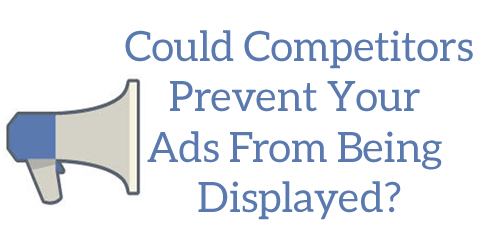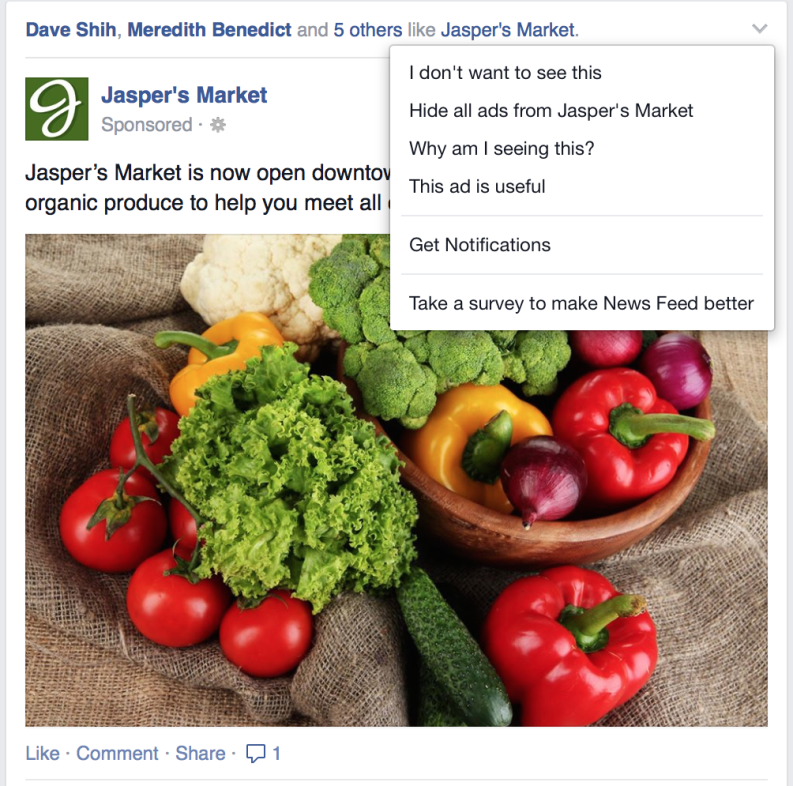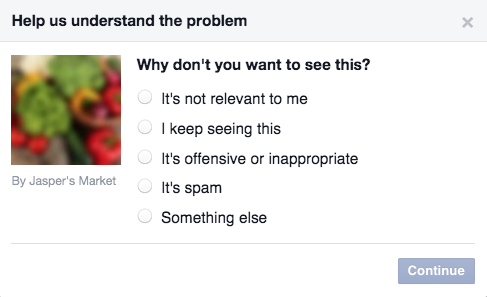
First, the good changes. When you see an ad in your news feed that you don’t like, you have an option to not just hide the ad, but now you can also say why you don’t want to see the ad. The options are “It’s not relevant to me”, “I keep seeing this”, “It’s offensive or inappropriate”, “It’s spam”, or “Something else.” From a user perspective, it helps influence the ads you see. Perhaps you don’t want to see political ads or ads from non-local businesses, you can tell Facebook that and they will tailor the ads they show you.
Here is the drop down you see on ads…
Now Facebook will ask why you want to hide it.
As a Facebook user, if you rarely hide ads (and aren’t hiding every ad you see, like some users do)
But the one troubling thing is that Facebook is using this information to influence the ads they show to all Facebook users, not just the ones who choose to hide ads. So if you have a large competitor with lots of employees, especially if you are targeting your ads locally, your competitor’s employees hiding your ads and reporting it as spam or inappropriate means that Facebook could display it less to everyone.
From their blog post:
When testing this update, we looked at when people told us that ads were offensive or inappropriate and stopped showing those ads. As a result, we saw a significant decrease in the number of ads people reported as offensive or inappropriate. This means we were able to take signals from a small number of people on a small number of particularly bad ads to improve the ads everyone sees on Facebook.
It could also make it harder for brands people love to hate, such as Walmart or McDonalds, with their advertising efforts. It will definitely be something to watch in case competitors or brand haters can manage to reduce the visibility of ads.
Jennifer Slegg
Latest posts by Jennifer Slegg (see all)
- 2022 Update for Google Quality Rater Guidelines – Big YMYL Updates - August 1, 2022
- Google Quality Rater Guidelines: The Low Quality 2021 Update - October 19, 2021
- Rethinking Affiliate Sites With Google’s Product Review Update - April 23, 2021
- New Google Quality Rater Guidelines, Update Adds Emphasis on Needs Met - October 16, 2020
- Google Updates Experiment Statistics for Quality Raters - October 6, 2020

